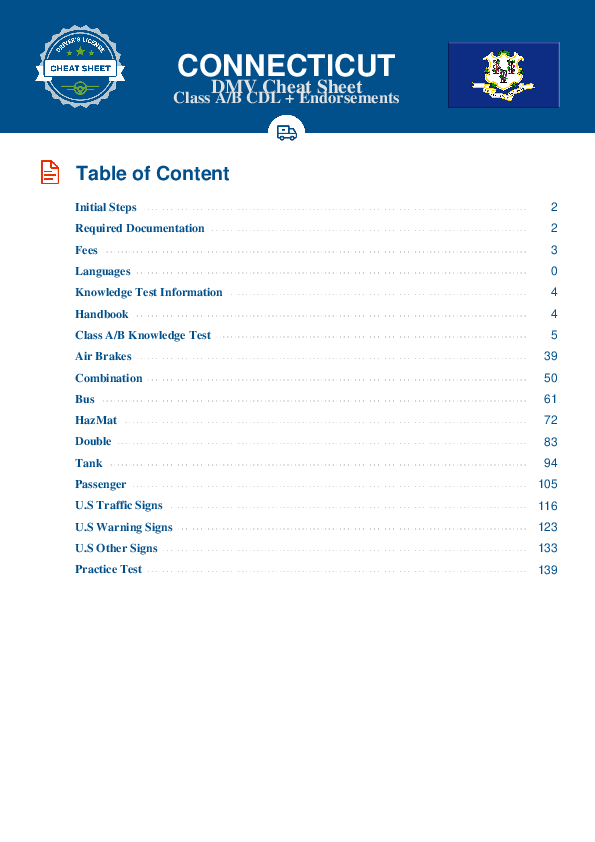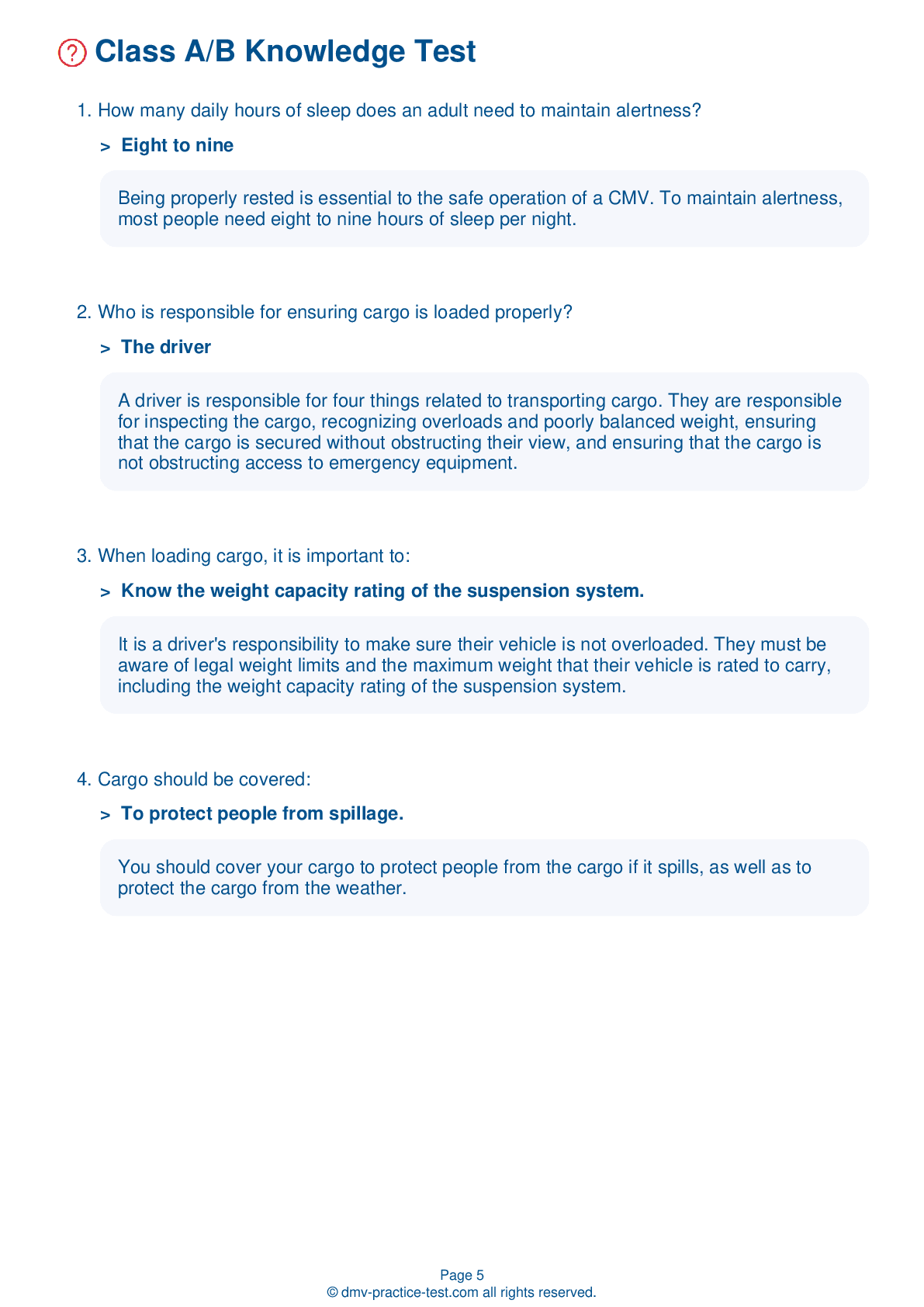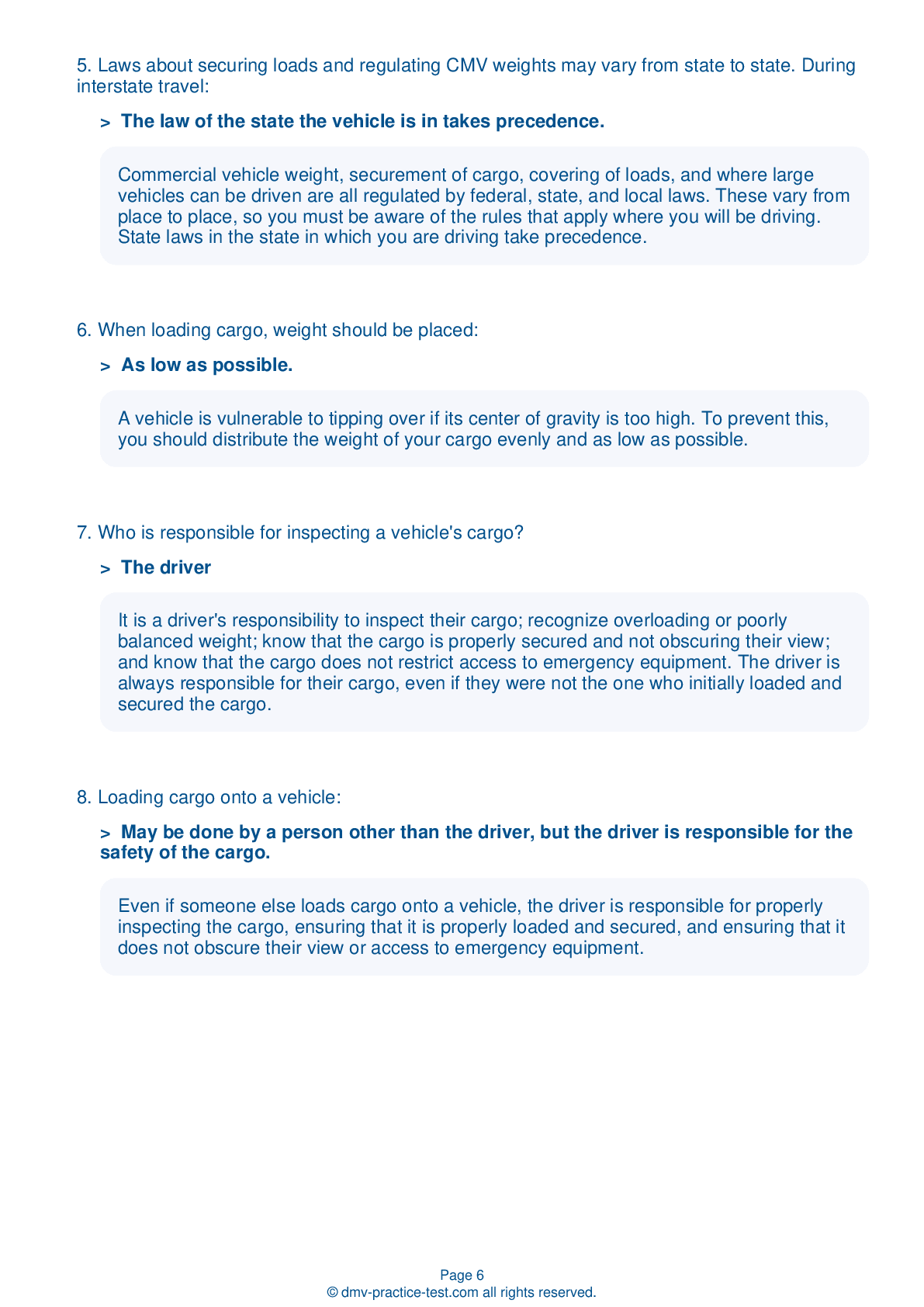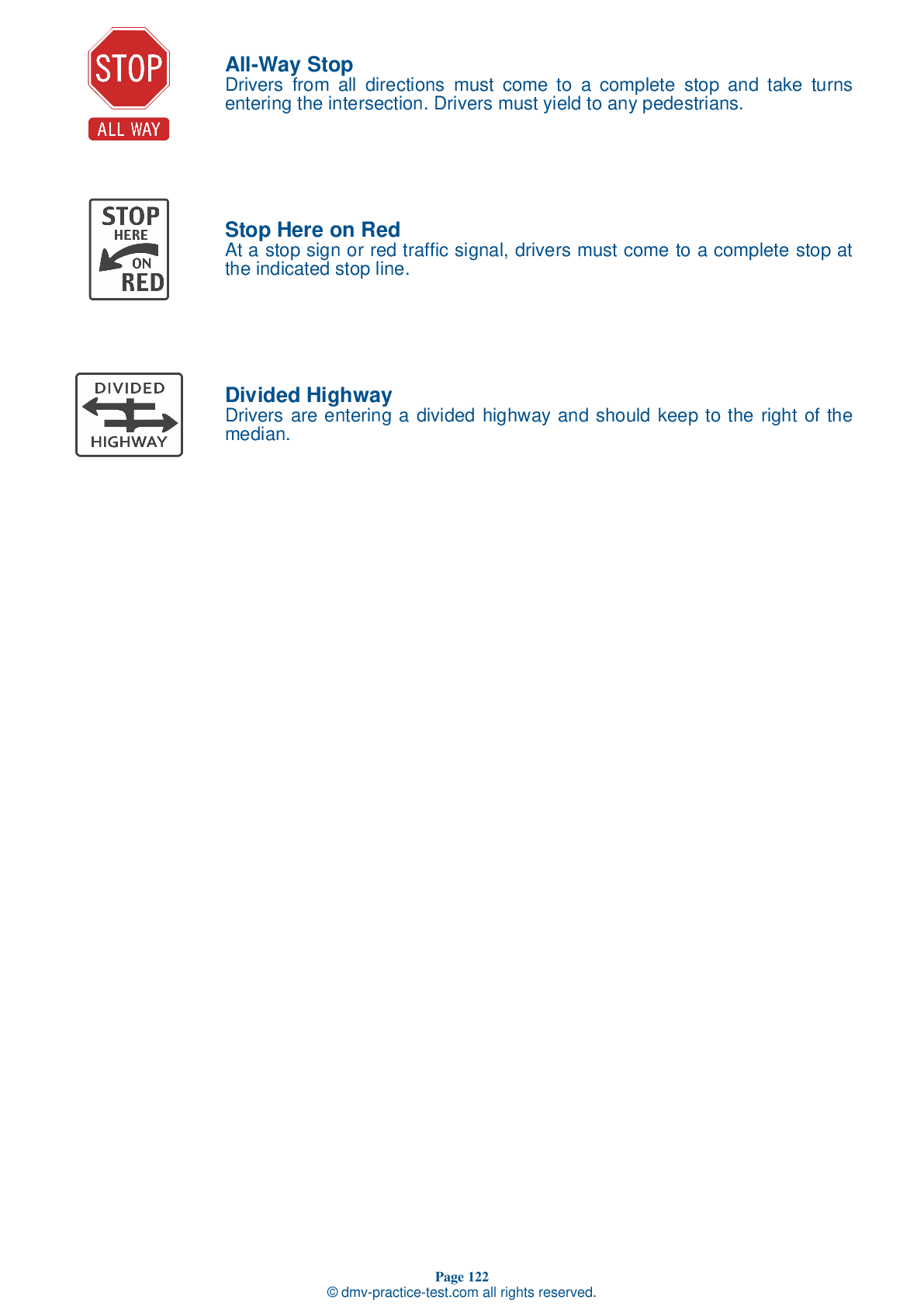HazMat #1
Hazmat Test | Connecticut 2025 #1 Page 2 of 5
On our website, we provide FREE practice - CDL hazmat test online! The official exam test consists of several obligatory parts, with all of them checking your knowledge of different blocks of road rules. If you need to obtain a CT CDL hazmat endorsement in 2025, practice as much as possible. Free sample tests published on our website will help you check and improve your knowledge and boost your grades. Please bear in mind that Connecticut requirements for issuing a hazmat endorsement for CDL may vary from those established in other states.
30
24
20
7 . What does "RQ" stand for?
Response quarantine
When marking hazardous materials in an "HM" column on a shipping paper, the letters "RQ" may be used instead of an "X" if a reportable quantity of the material must be identified.
8 . To transport hazardous materials, what does a driver need?
A CDL with a cargo endorsement
You must have a CDL with a hazardous materials endorsement to drive a vehicle of any size that is used for transporting hazardous materials.
9 . A placard should be placed:
A placard must be placed at least three inches away from any other markings. The placard should be kept clear of attachments or devices, such as doors and ladders. Placards should always be placed against a background of a contrasting color.
10 . An improperly placarded vehicle:
Can be driven if it does not contain radioactive materials.
A vehicle carrying hazardous materials must be appropriately placarded to be driven. An improperly placarded vehicle may only be driven if necessary to protect life or property in an emergency.
11 . Flammable gases are categorized as ____ hazards.
Class 7
Flammable gases are assigned to hazardous materials Class 2.
12 . An improperly placarded vehicle can only be moved:
A vehicle that has not been properly placarded may not be driven, except when necessary to protect life or property in an emergency.
2025 Connecticut | Frequently Asked Questions
To acquire a CDL Hazmat endorsement in Connecticut, you must first have a Commercial Driver's License (CDL). Then, pass the Hazardous Materials Endorsement Knowledge Test. You also need to complete a federal security threat assessment (TSA background check), including fingerprinting. Visit your local DMV to start the process and get additional information.
To obtain a CDL Hazmat license, you must have a valid Commercial Driver's License (CDL). You are required to pass the Hazardous Materials Endorsement Knowledge Test. A federal security threat assessment, including fingerprinting and a background check by the Transportation Security Administration (TSA), must also be completed. You should have a clean driving record as well.
When applying for a CDL Hazmat endorsement, you'll need to provide proof of U.S. citizenship or lawful permanent residency, such as a valid U.S. passport or birth certificate. You'll also need your current Commercial Driver's License (CDL), social security card, and proof of Connecticut residency. A completed application form (H-170) is also required, available from the Connecticut DMV.
Yes, there is a dedicated written test for the CDL Hazmat endorsement. This test covers the necessary knowledge about the transportation of hazardous materials. It includes questions about loading and unloading hazardous materials, bulk packaging, and emergency response procedures. Passing this test is a prerequisite for obtaining the Hazmat endorsement on your CDL.
The CDL Hazmat endorsement written test in Connecticut covers a variety of subjects including identifying different types of hazardous materials, understanding shipping papers, placarding rules, containment rules, emergency response procedures, and safety protocols. It also tests knowledge on loading and unloading hazardous materials and the risks associated with each type of material.
Yes, there are extra charges associated with acquiring a CDL Hazmat endorsement. These include the application fee, fingerprinting fee, and the federal security threat assessment fee. The total cost can be over $100. However, the exact amount can vary and it's best to check with the Connecticut Department of Motor Vehicles for the most current fees.
Yes, a background check and security clearance are mandatory for the CDL Hazmat endorsement. The Transportation Security Administration (TSA) conducts a security threat assessment that includes fingerprinting and a review of criminal, immigration, and terrorism records. This is to ensure the safety and security of hazardous material transportation.
Yes, specialized training is required for the CDL Hazmat endorsement in Connecticut. Applicants must pass a written test that covers hazardous materials regulations and safety procedures. In addition to passing the test, they must also undergo a federal background check and fingerprinting. These requirements ensure that drivers are adequately prepared to handle hazardous materials safely.
No, you cannot transport hazardous materials without a valid CDL Hazmat endorsement in Connecticut. It is a federal requirement and it's illegal to do so without the proper endorsement. Violations can result in substantial fines, imprisonment, and disqualification from holding a commercial driver's license.
Yes, you can add the CDL Hazmat endorsement to your current CDL license. You'll need to pass the Hazmat knowledge test, undergo a TSA background check, and pay the necessary fees. It's not a new license, but an addition to your existing CDL.



